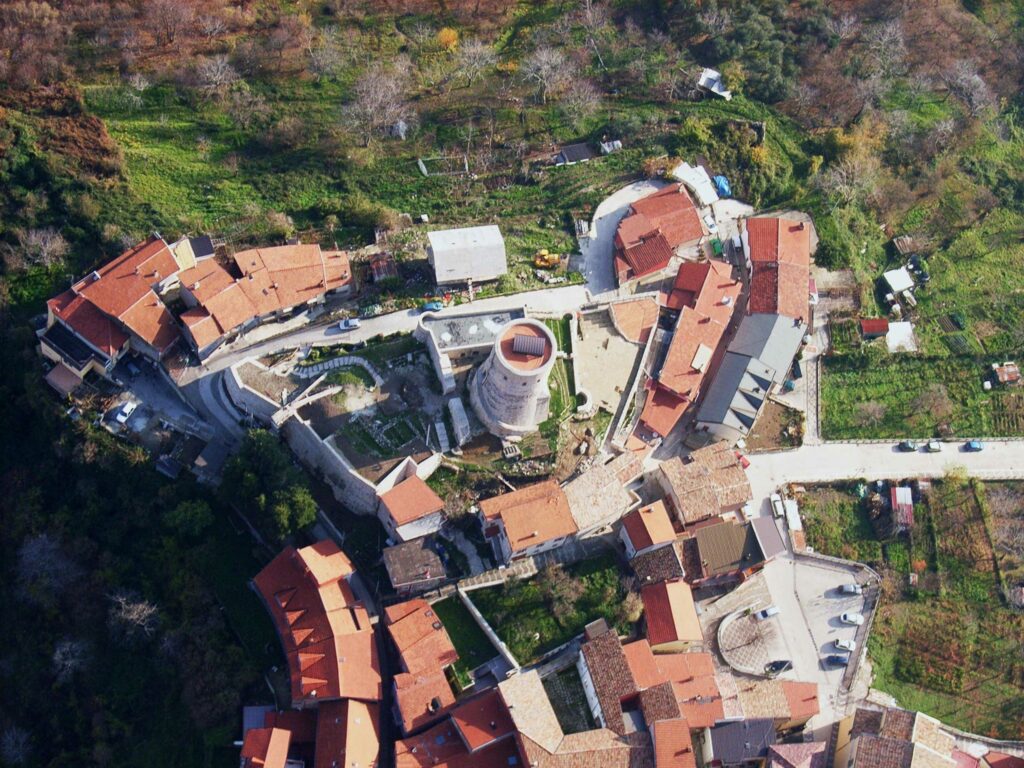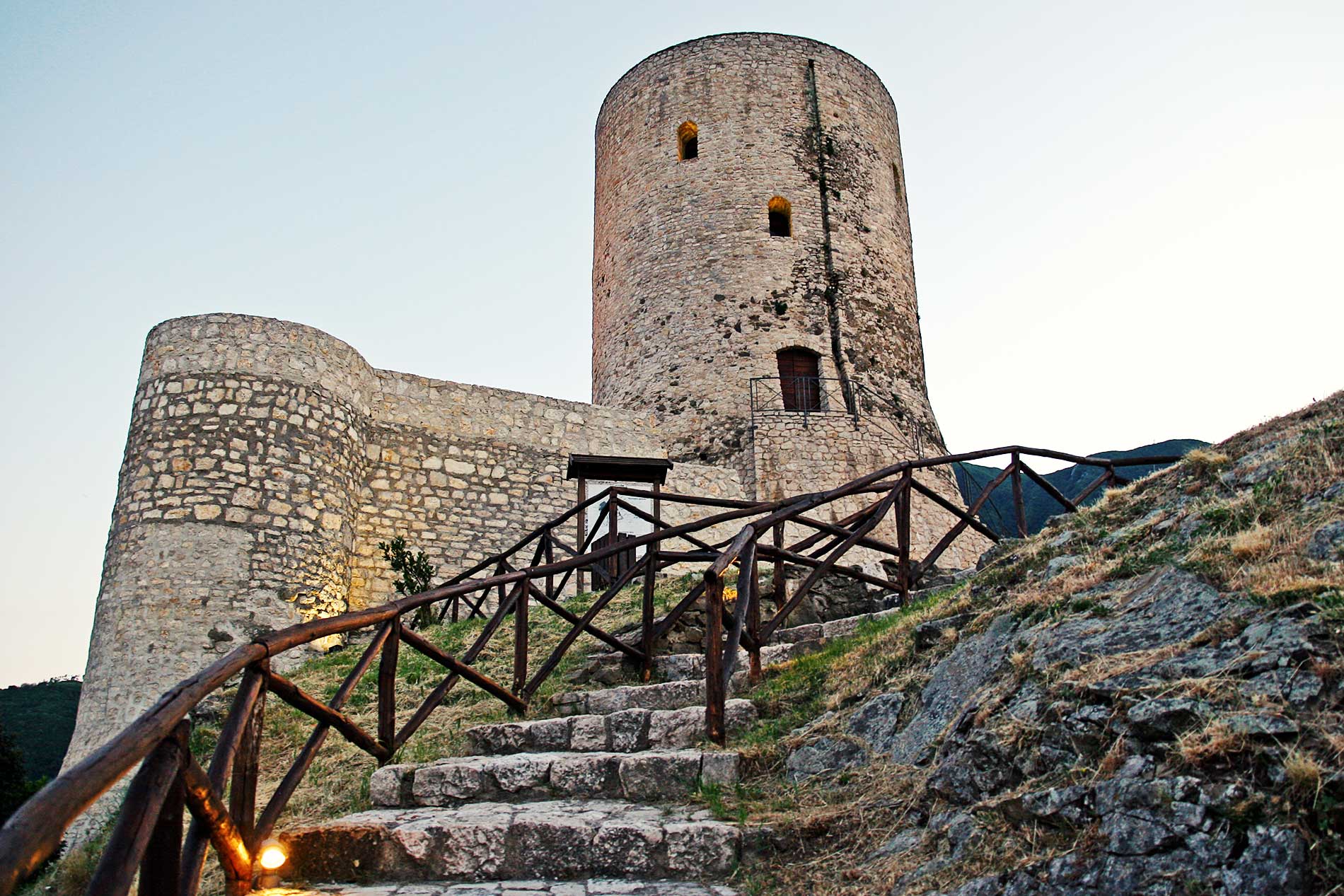Summonte is a village in the province of Avellino (Campania) gently lying on the slopes of Mount Partenio, at 700 meters of altitude (2,300 feet). Today, it counts 1,485 inhabitants.
The village has a long history, as its very name – which is Latin in origin and comes from sub montis, “under the mountain” – attests, but there are also other traces of its important past: first of all its castle, which was first mentioned in documents from 1094. There, the fortress was described as castello qui dicitur Submonte, “the castle which belongs to Submontis,” the original name of the village.
If we look at its architecture, time in Summonte seems to have stopped in the Middle Ages: the majestic castle with its fortification and tower, but also the very layout of the village, with its three main streets and genteel buildings, is very reminiscent of those long-gone and somehow mysterious times. Walking in Summonte is like being on a historical movie set or, if you prefer, like moving into the world of King Arthur, Queen Genevieve, and Lancelot. Indeed, tragic love and romantic drama appear in the history of Summonte, which was once home to feudal baroness Francesca Malerba, three times married, known for her beauty, and at the center of many a love duel.
The most characterizing corner of Summonte is its Medieval Tower, known as Torre Angioina, which dominates the valley and the urban center: from here, visitors can enjoy wonderful views of the village’s surroundings and, perhaps, they can imagine, for a few seconds, to be princes and princesses living in different, more magical times. The five-story, 16-meter (52.5 ft) high building hosts also a permanent exhibit about the Doria family, feudal landlords of Summonte in the 16th century.
The heart of the village remains, today like centuries ago, its main square, where the Tiglio di Summonte, an almost 300-years old linden tree that majestically dominates the urban landscape, stands. It is one of Italy’s alberi monumentali, “monumental trees,” and impresses with its 37 meters of height (121 ft) and 9 meters of circumference (29.5 ft). From here, visitors can enjoy walks around the ancient borough, which is welcoming and well-preserved, and purely Renaissance in style and feel.

Summonte’s patron saint is Saint Nicholas of Bari, who is celebrated on the 6th of December every year. The Chiesa Madre, the main church in town, is a baroque beauty dedicated to him, just like the Arco di San Nicola, Saint Nicholas’ Arch, once the main access gate to the village.
In Summonte there is plenty to do, too. In July every year, the Sentieri Mediterranei festival brings to town famous ethnic music performers like Noa, Mario Biondi, Yussou N’Dour, and Hevia, artists who participated in previous editions. If you’d go for something more traditional, then you should try the Sagra della Castagna which every October celebrates this precious fruit. And then, of course, there are the beautiful celebrations for Saint Nicholas’ Day in December, a mix between Faith, lore, and heritage.
If you enjoy visiting museums, you can visit the Museo Civico di Summonte, hosted in the castle and divided into two interesting sections. The first, Submontis Medievalia, is dedicated to Medieval and Renaissance weapons used between the end of the 15th and the beginning of the 16th century, but it also includes interesting common objects that soldiers would carry with them, including table games like tria. The second section is dedicated to the archaeological artifacts unearthed during excavations carried out on the castle’s grounds.
Food is an attraction in itself in Summonte: if you visit in the fall, you should try the traditional chestnut and porcini mushroom soup, a dish that brings together two of the typical products of this area. Here, you can also find mortarelle hazelnuts, black truffles, nocillo liqueur, caciocavallo cheese, honey, and soppressata, a type of cured dried sausage typical of the South of Italy.




























